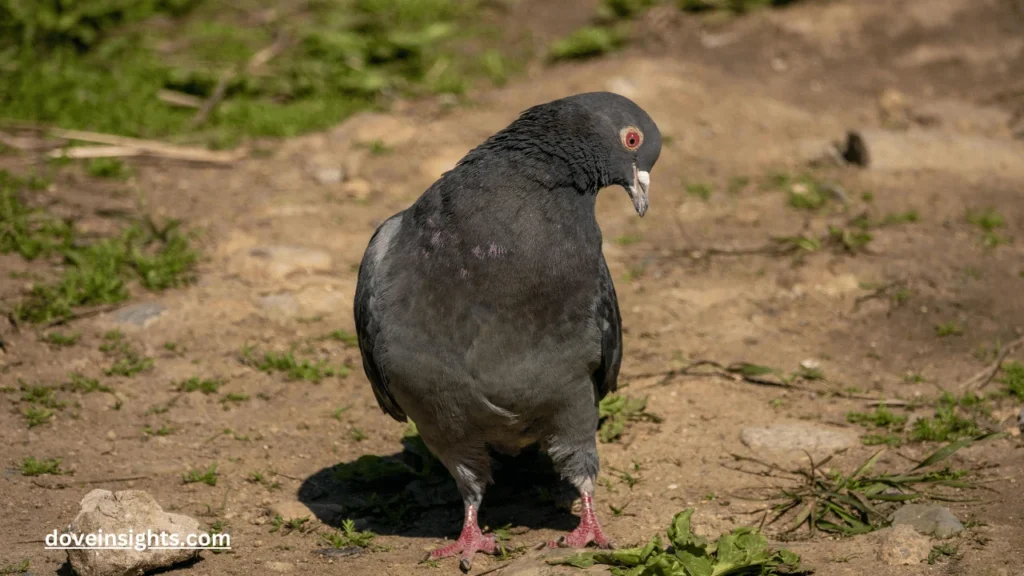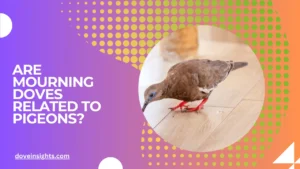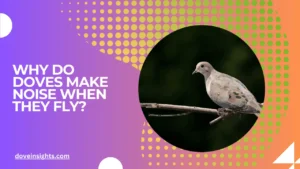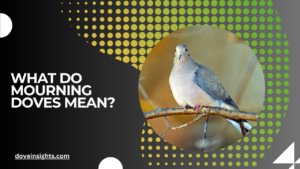Mourning doves are one of the most common and easily recognizable birds in North America, known for their soothing coos and delicate appearance.
However, their behavior often leaves people puzzled. Why do they sit motionless for hours? Why do they fly into windows or act startled at the slightest sound? These quirks lead many to question: Are mourning doves dumb?
The answer isn’t as simple as it may seem. Mourning doves exhibit behaviors that might appear strange or unintelligent to us, but many of these actions are deeply rooted in survival instincts and unique adaptations.
This article delves into the biology, behavior, and perception of mourning doves to unravel whether they’re truly “dumb” or simply misunderstood.
Contents
The Quirky Behaviors of Mourning Doves
Mourning doves are often judged by their seemingly odd actions.
- Startling easily: Mourning doves are known for taking flight at the slightest sound, leading to the impression that they are overly skittish.
- Flying into windows: Many perceive this as a sign of low intelligence, but it often stems from their inability to recognize glass as a barrier.
- Nesting choices: Mourning doves frequently build nests in precarious or unusual locations, leading some to question their decision-making skills.
While these behaviors may seem peculiar, they are often linked to their survival instincts and ecological niche.
Survival Instincts or Lack of Intelligence?
To understand mourning doves’ actions, it’s crucial to look at their evolutionary adaptations.
- Flight response: Their tendency to startle easily is a defense mechanism against predators, honed over millennia to prioritize survival.
- Simplistic nesting habits: Mourning doves prioritize speed over complexity when building nests, which allows them to reproduce quickly in environments with high predation.
- Perceived clumsiness: Their rapid takeoffs and erratic flight patterns are designed to evade predators, even if it looks awkward to us.
These behaviors highlight their focus on survival rather than what humans might perceive as intelligence.
Comparing Mourning Doves to Other Birds
When judging mourning doves, it’s helpful to compare them to other bird species.
- Crows and parrots: These birds are known for their problem-solving skills and ability to mimic, setting a high bar for avian intelligence.
- Pigeons: Mourning doves’ close relatives, pigeons, have demonstrated surprising cognitive abilities, such as recognizing themselves in mirrors.
- Songbirds: Mourning doves lack complex vocalizations and intricate social behaviors, which might make them seem less intelligent.
While mourning doves don’t excel in the same areas as some birds, their adaptations suit their specific ecological roles.
The Role of Human Perception
Our judgment of mourning doves’ intelligence is often shaped by how we view animal behavior.
- Anthropomorphism: People tend to evaluate animals based on human traits, like problem-solving or creativity, which might not be relevant for mourning doves.
- Biases against simplicity: Mourning doves’ straightforward behaviors, such as their simple diet and nesting habits, may lead to underestimation of their adaptability.
- Misinterpretation of behaviors: Actions like window collisions are seen as mistakes but are often accidental consequences of human-altered environments.
Understanding mourning doves requires a shift in perspective—one that values survival over complexity.
The Quiet Intelligence of Mourning Doves

Despite their reputation, mourning doves possess traits that demonstrate unique forms of intelligence.
- Efficient reproduction: Mourning doves produce multiple broods a year, ensuring their species thrives even in challenging conditions.
- Resourcefulness: Their diet includes a wide range of seeds, allowing them to adapt to various habitats.
- Navigational skills: Mourning doves are excellent at finding resources and returning to favored feeding spots, showing spatial awareness.
These qualities reveal a quiet, understated intelligence that ensures their survival and success in the wild.
Conclusion
Mourning doves may not perform tricks or exhibit the same problem-solving abilities as crows or parrots, but that doesn’t make them “dumb.” Their behaviors—often misunderstood—are tailored to their survival and ecological role.
By appreciating their unique adaptations and quiet intelligence, we can move beyond simplistic judgments and develop a deeper respect for these gentle creatures.
The next time you see a mourning dove nesting in an odd spot or fluttering nervously at a noise, remember that what might seem “dumb” to us is often a sign of their remarkable ability to thrive in a complex world.
FAQ’s
Why do mourning doves fly into windows?
Mourning doves can’t recognize glass as a solid barrier. Reflections of trees or sky confuse them, leading to collisions.
Why are mourning doves so skittish?
Their startle response is a survival instinct designed to help them escape predators quickly.
Do mourning doves build bad nests?
Mourning doves build simple, quick nests to reproduce rapidly, prioritizing efficiency over sturdiness.
How do mourning doves compare to other birds in intelligence?
While not as cognitively advanced as crows or parrots, mourning doves excel in survival-related adaptations like navigation and reproduction.
Why do people think mourning doves are dumb?
Their clumsy behavior, like flying into windows or nesting in odd places, can appear unintelligent but often has practical explanations.
What is the purpose of their repetitive cooing?
Their coos are a form of communication, often used to attract mates or establish territory.








